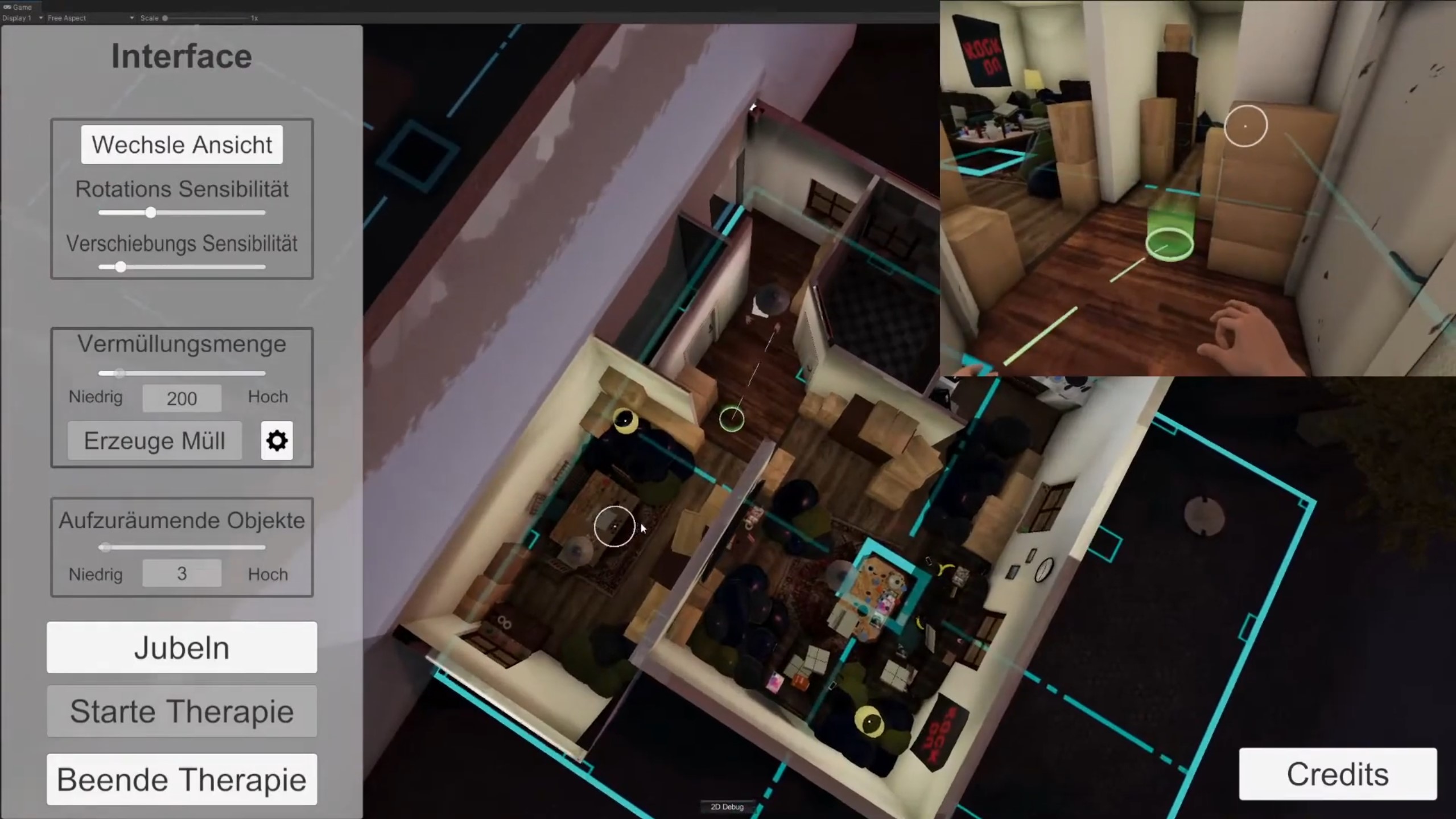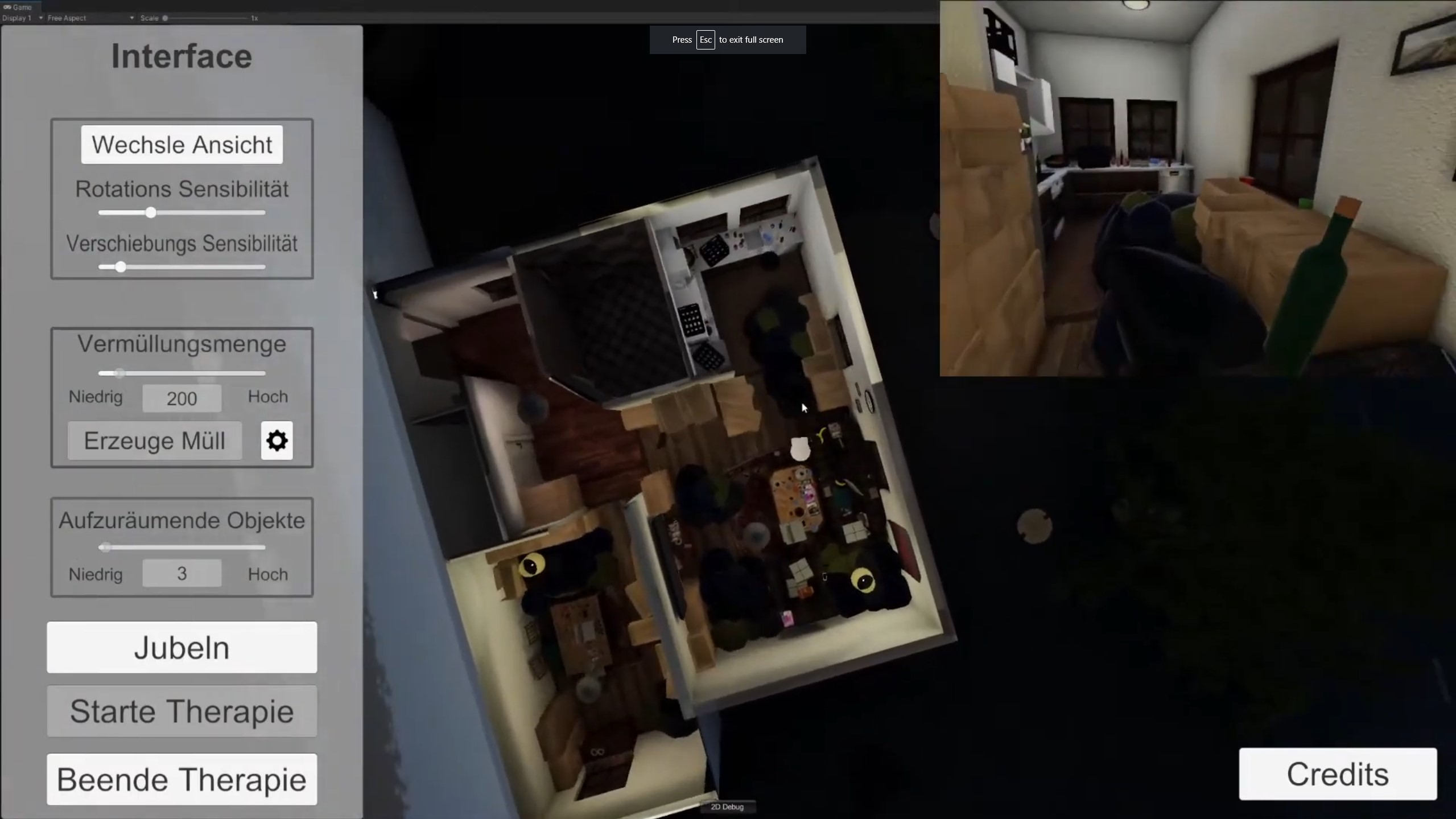Compulsive Hoarding
Compulsive Hoarding is a serious game that utilizes the inherently immersive nature of VR to support the treatment of hoarding disorders. The game has the patient clean a cluttered apartment piece by piece to slowly accustom them to letting go of their hoarded belongings in a safe and controlled environment. The entire process can be monitored by their psychologist through a separate interface, which lets them adjust various settings.
Compulsive Hoarding was developed as part of a group project consisting of seven students, in collaboration with four psychologists from the Psychotherapeutic Health Center in Munich. The goal of the project was to develop a tool that can effectively aid a psychologist through the therapy of their patient.
What was my role?
While I'm usually involved in the programming-related aspects, I chose a more artistic role in creating the models and parts of the environment in this project. I did this primarily because I wanted to improve in these fields at the time, but also because I was one of the few members on the team that was confident enough in their modeling knowledge to work on these parts. Having said that, I still ended up having a significant hand in other areas, such as the design and quality assurance of the game. Some of these include:
- Creation of models: Thanks to my artist role, I got to work on many of the game's assets. That includes all of the outside terrain, most of the furniture, and about half of the items that fill the rooms. Apart from allowing me to achieve my goal of getting better at asset creation, I got to familiarize myself more with the purely artistic aspects of game development and formed a better understanding of how I can improve my code in the future to ease the load on the artist side.
- Research into immersion: Since compulsive hoarding was part of a serious games lecture, we were additionally tasked with writing a paper on a game-related topic. The topic I chose was immersion in games, as I had been fascinated by it for ages, and the paper was the perfect opportunity to do some deeper research on it. I completed most of the paper in the earlier stages of the project and, as such, was more or less the go-to person when any question regarding immersion emerged.
- Debugging game systems: I usually finished all of my tasks early, which allowed me to take on additional tasks. These tasks involved testing already-implemented mechanics and checking the game for any issues that might have been overlooked. This helped uncover some major performance issues in regards to collisions and enhanced the overall game experience.
- Working with external stakeholders: Another major part of the project involved working together with a group of psychologists to include wished-for features. Working with them and incorporating their knowledge and feedback into the game's design was an interesting and valuable experience that ensured that the game's mechanics had the intended effect on patients.
- Project management with Scrum: To support the management of the project, we utilized Scrum throughout the entirety of its duration. Having used it on multiple projects before, it was easy to incorporate into my workflow. It ended up helping me immensely in managing the time I spent on creating certain assets and assisted me in prioritizing important tasks during each stage of the project.



